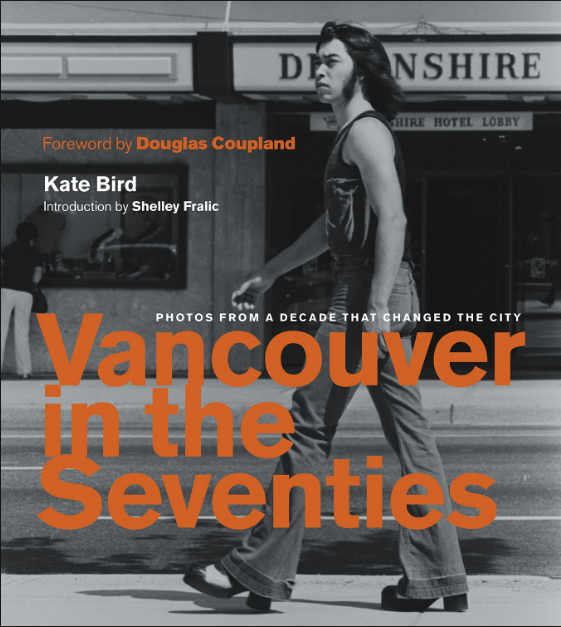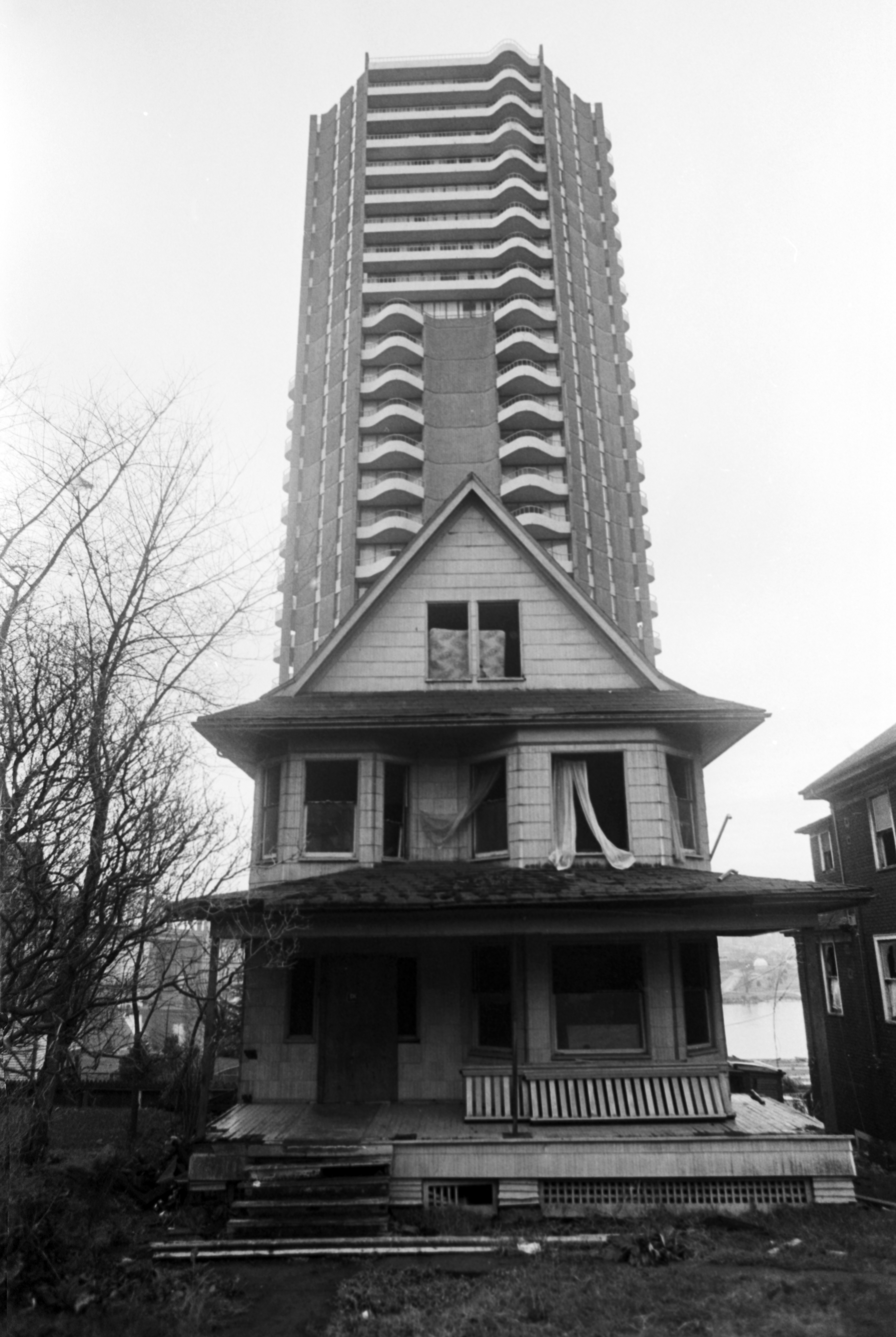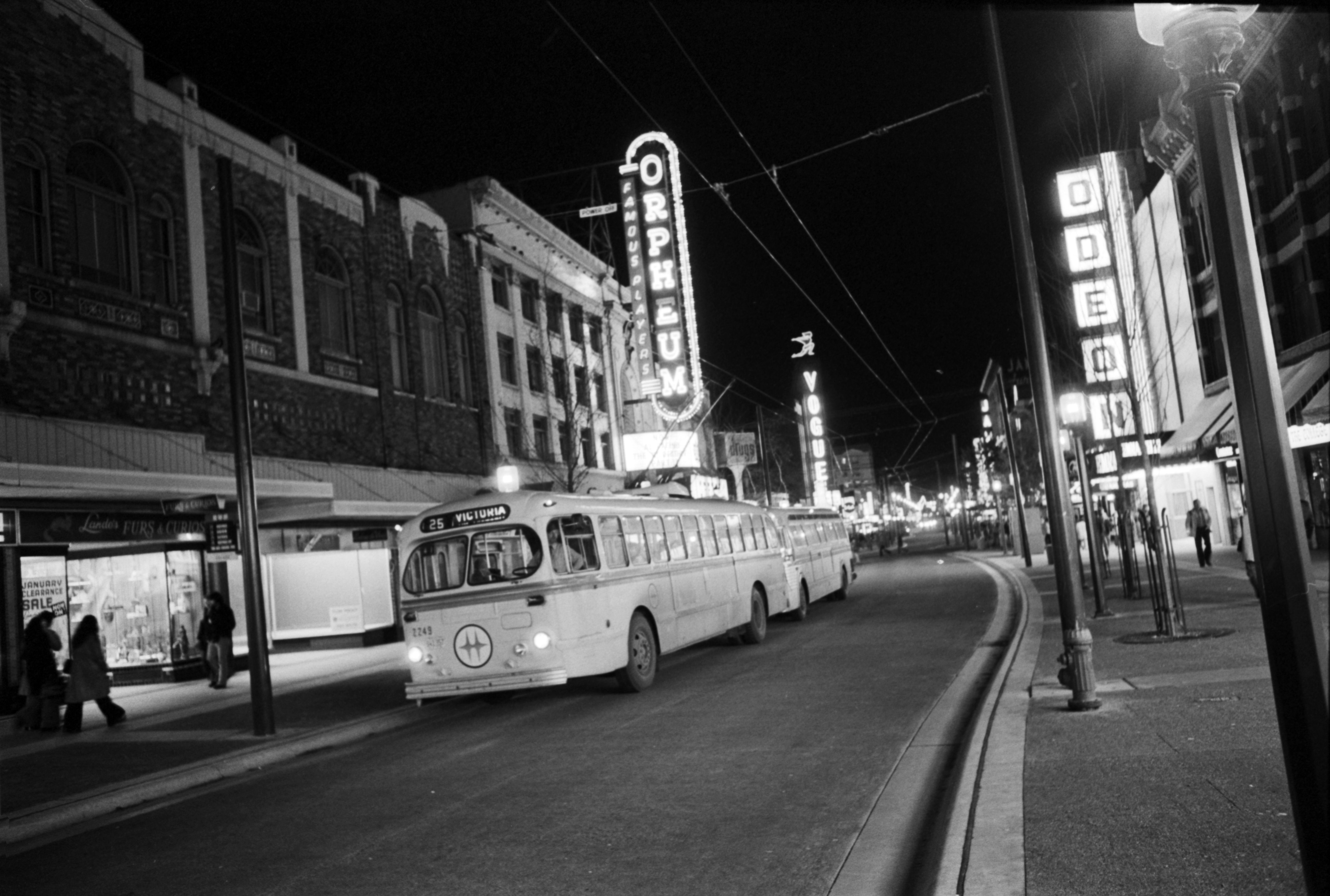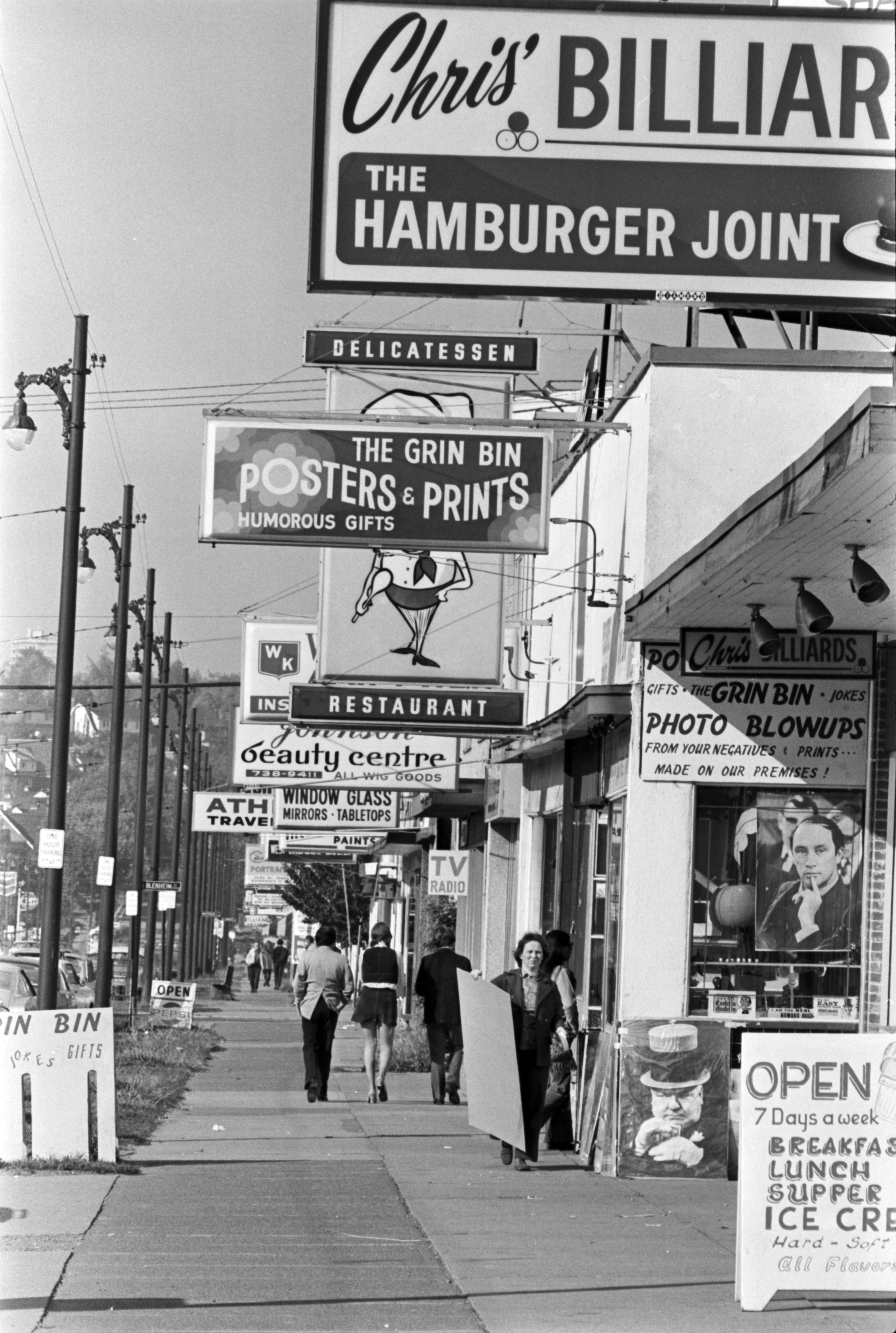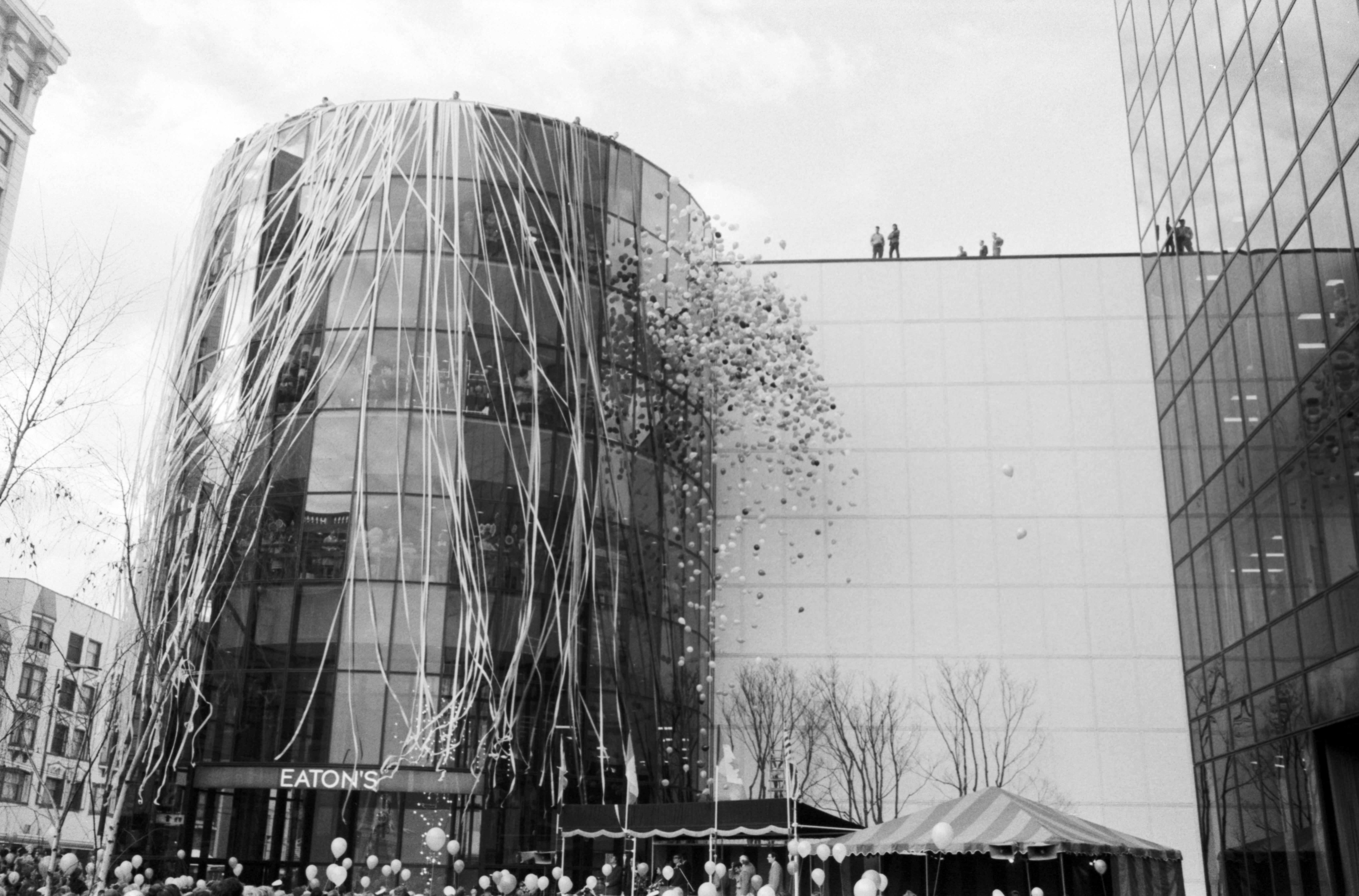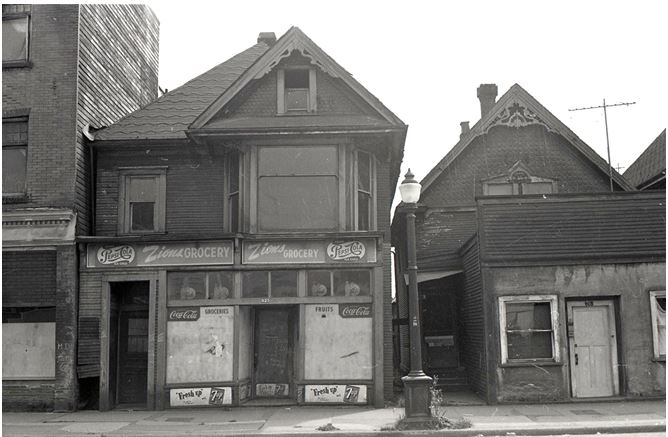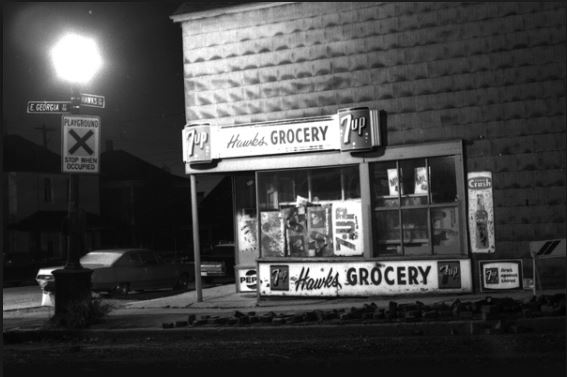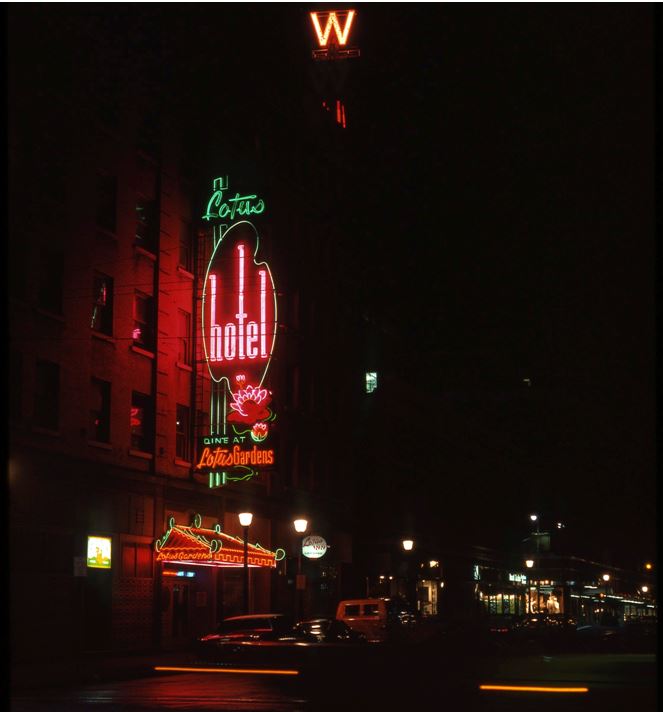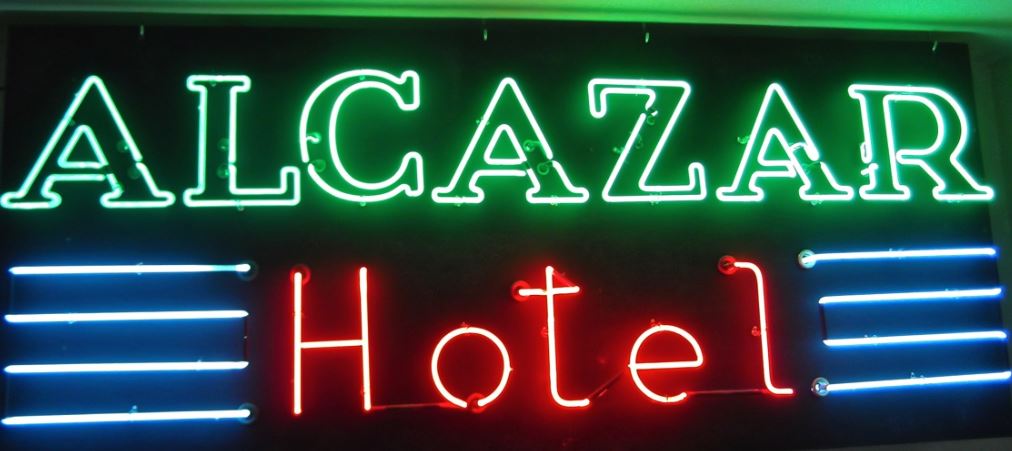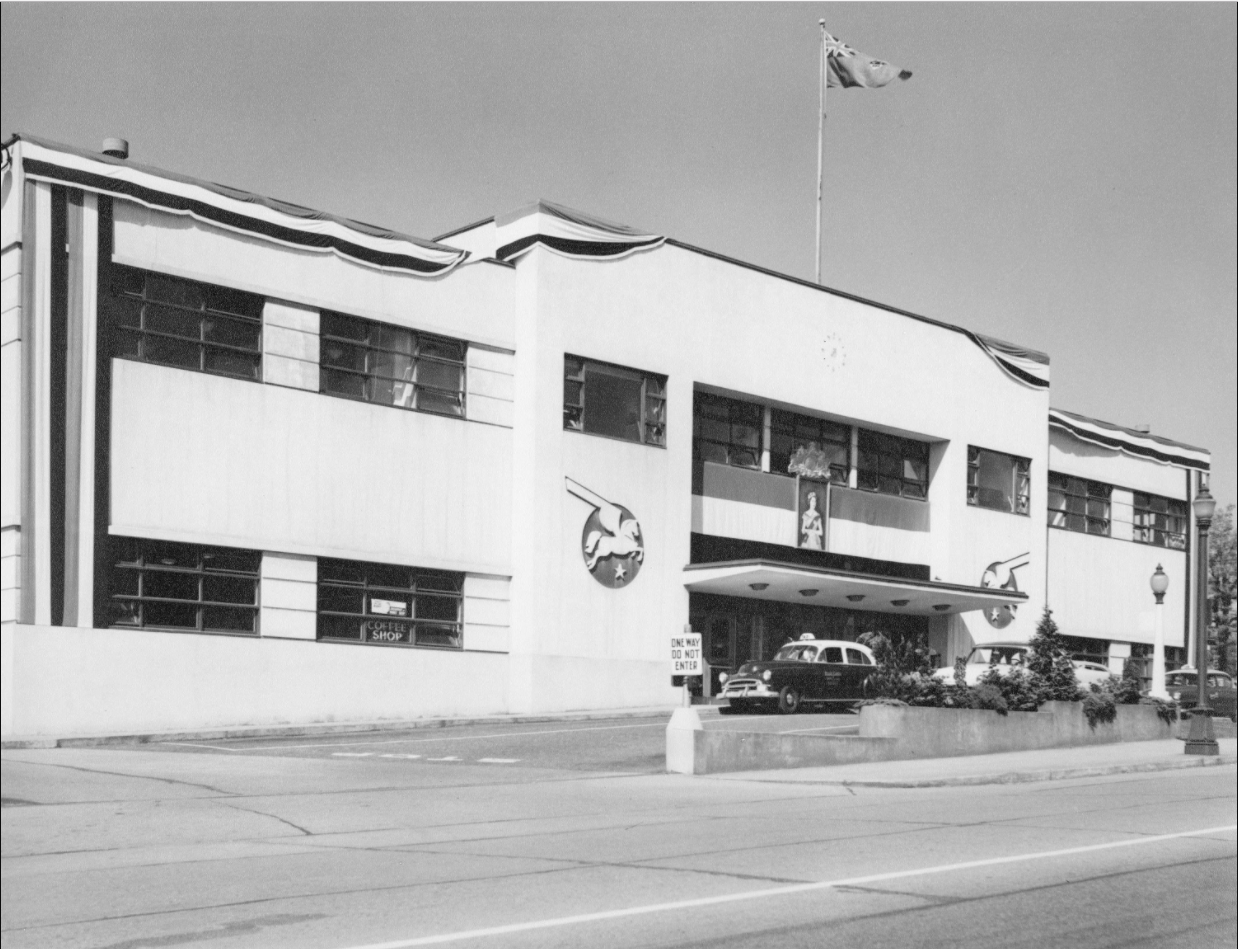
From Vancouver Exposed: Searching for the City’s Hidden History
My friend Angus McIntyre was a Vancouver bus driver for 40 years and often took photos of heritage buildings, neon signs, street lamps and everyday life on his various routes. His photos are always so vivid and interesting (see his posts on Birks and elevator operators) and when he sends me one, I stop whatever I’m doing and nag him for the back story.
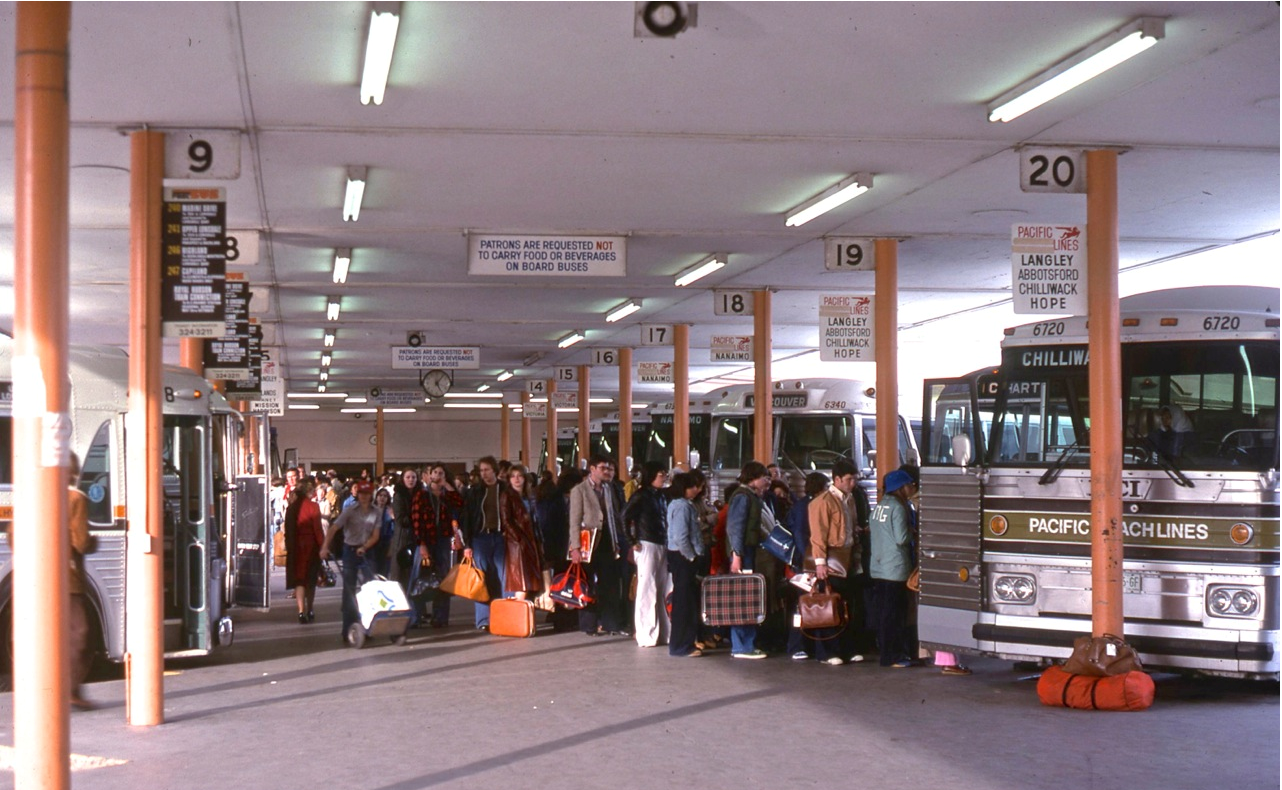
Angus shot this photo of the old bus depot on Dunsmuir Street (Larwill Park) in 1979. He tells me: “This was just after Pacific Stage Lines had been dissolved, and Pacific Coach Lines had started the replacement service. The signs have tape covering the word ‘Stage’.” Angus says that on an earlier busy Sunday, employees conducted a mock funeral for Pacific Stage Lines. “Afterwards, there was a wake at the bus drivers’ booze can across the street on Dunsmuir. Seems Vancouver has this thing for mock funerals,” he says.
Seems we also have a thing for parking lots. Vancouver seems to revere parking lots as much as other cities value heritage buildings, public space, and art. (See Our Missing Second Hotel Vancouver).
Larwill Park is now the huge downtown parking lot that is bounded by Cambie, Dunsmuir, Beatty and Georgia Streets. It began life as the Cambie Street Grounds, a park and sports fields. And, being opposite the Beatty Street Drill Halls, at times operated as a military drill ground. The park was named after Al Larwill, who the story goes, was made “caretaker” after squatting in a shack on the land for many years. He was given a house on a corner of the land where he stored sports equipment and allowed team members to use his dining room to change.
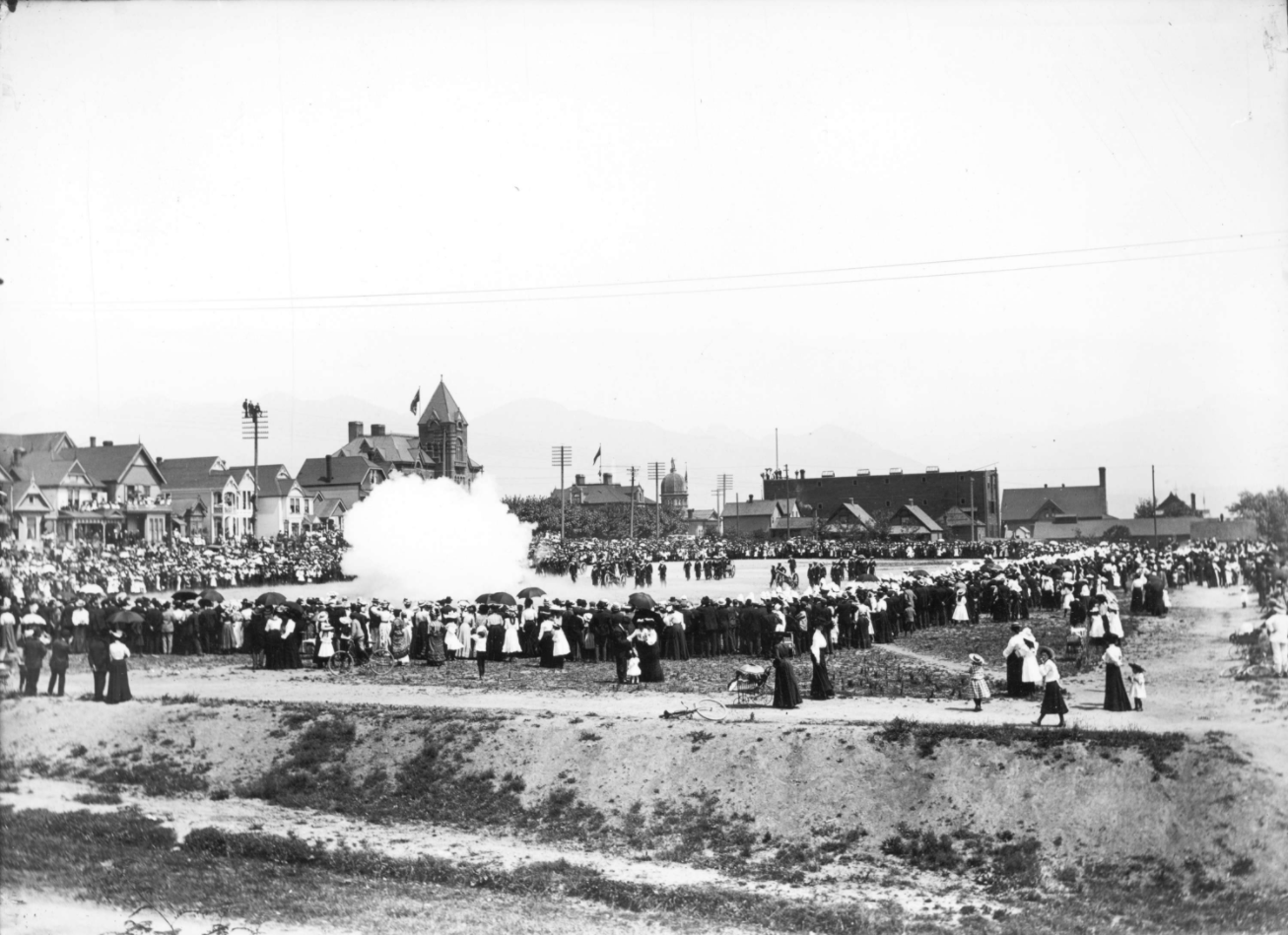
In 1946, Charles Bentall of the Dominion Construction Company built the bus depot, and it opened the following year as the most modern in Canada. Pacific Stage Lines, Greyhound, Squamish Coach Lines and others operated out of the terminal, until car culture struck in the 1950s and ‘60s and some of the companies went under.
In 1979, when Angus took his photo, Pacific Stage Lines had just merged with Vancouver Island Coach lines to become Pacific Coach Lines. In 1993, the bus depot moved to Pacific Central Station and the land became a parking lot.
The Vancouver Art Gallery has its sights on the land and wants to turn it into a backdrop for its for its bizarre bento-box building.
For more posts see: Our Missing Heritage
© All rights reserved. Unless otherwise indicated, all blog content copyright Eve Lazarus.


